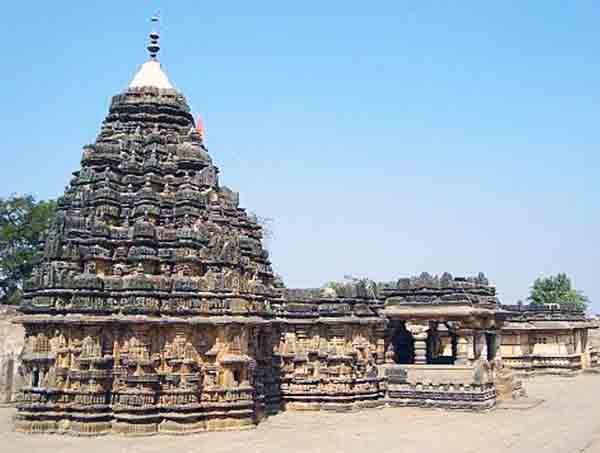Lakshmeshwar (Laxmeshwar) referred to as Vishnupalli in the ancient days, Purikara in the Dwapura Yuga and Puligere or Purigere or Porigere or Pulikaranagara as per inscriptions has traditionally been an important seat of learning, literature, art and architecture. Said to be the capital city of the Badami Chalukyas (in the 7th century), this sacred kshetra was once dotted with temples built by the Rashtrakutas of Malkhed, Kalyani Chalukyas, Kalachuris, Seunas and finally, the Vijayanagara Empire.
Believed to have been a densely wooded area with tigers roaming around freely in the olden days, this tirthasthala used to be frequented by poets, writers, sages, saints, yogis and tapasvis. According to historical records, Lakshmeshwar is one of the few places which patronized chaste Kannada and therefore, inscriptions, texts and even official letters used to be written in Kannada.
Someshwara Temple is its most famous edifice and finds mention in several literary masterpieces. Locals strongly believe that this temple is a Swayambhu (self- manifested) and was worshipped by their ancestors. A Jain king converted this sacrosanct temple into a Jain temple and it remained like that for two centuries. One night, the idol of Parshvanatha was replaced miraculously with the extremely rare Rishabharuda that is revered by one and all.
The temple is said to have been built in the 11th – 12th century by the Western Chalukyas with modifications made by the Vijayanagara Empire. There are three entrances on the east, north and south. This east – facing temple has a mukhamandapa, an ardhamandapa, a navaranga and a garbha griha.
The mukhamandapa is supported by perfectly proportioned pillars with a circular space for dancers. There are exquisitely carved perforated panels, floral and foliage motifs, auspicious Hindu iconography, lotus patterns, miniature niches, repetitive elements, gods and goddesses and various forms of Lord Shiva and Devi adorning the shikhara, the entrance porches, the ceilings, the external facades and doorways.
There are Viragal or stones dedicated to war heroes seen in the complex. There is a large pushkarani that runs beneath the temple and is accessed by a flight of steps. Inscriptions refer to a connection between this temple, a Vedic School of Learning that had been established here and a Vedic School of Learning in Somnath. Perhaps, this is why this temple is known as Dakshina Somanatha.
There is still a lot that is not known about this temple and its actual date of construction. However, one cannot deny the fact that every inch of this temple exudes the artistic excellence and architectural mastery of the Western Chalukyas and Vijayanagara Empire.
Muslim invaders ran amuck in the 15th – 16th century and desecrated countless temples in this region reducing them to rubble.
Written by Lakshmi Subramanian


Leave a comment